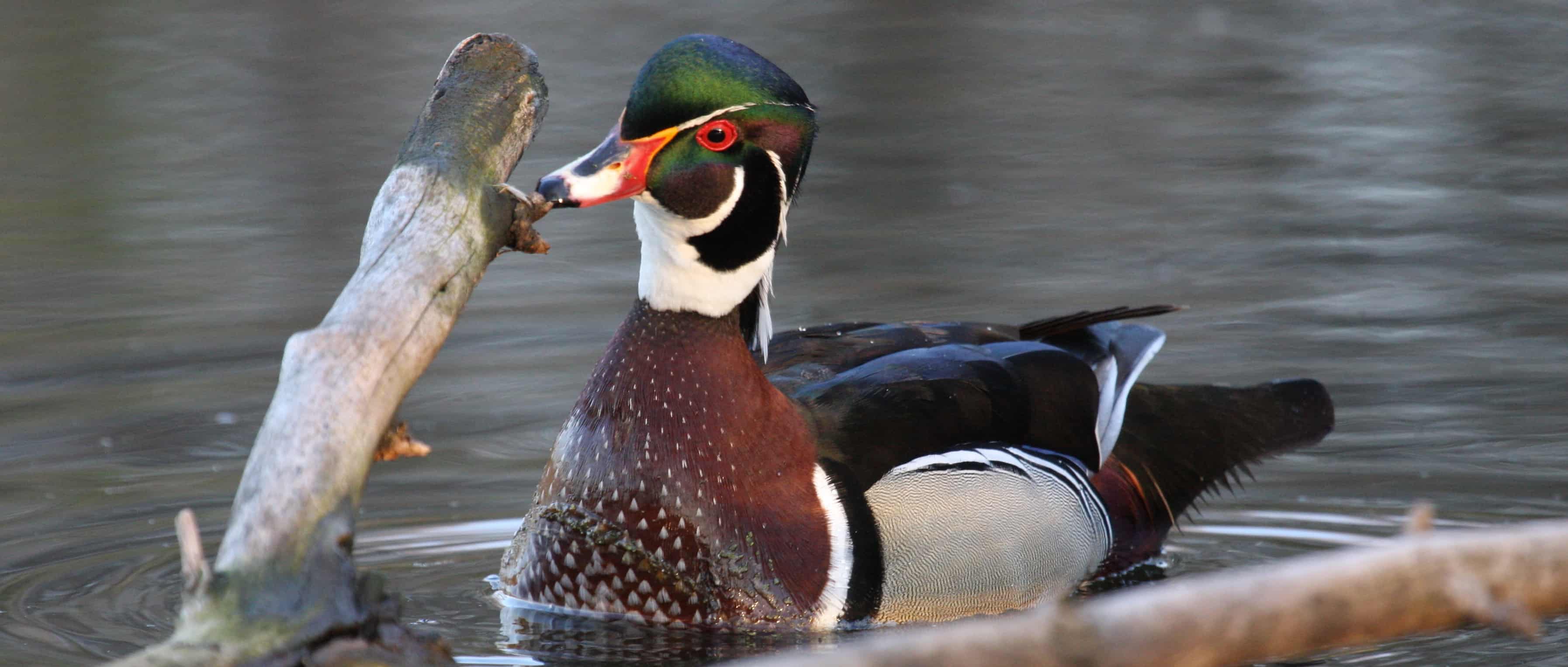Share this article
Researchers Enhance Nesting Efficiency for Wood Ducks
Studying ducklings paddling happily in a lake might sound like a relaxing endeavor, but that isn’t always the case. A hungry heron or a vicious cottonmouth, with a craving for duck, could appear out of nowhere and disturb the peace — and the research.
Brian Davis, assistant professor at Mississippi State University and TWS member, is all too familiar with these sorts of interruptions. Once, while researching the effects of artificial nesting structures and reproductive data on the recruitment of wood ducks (Aix sponsa), Davis watched as a red-shouldered hawk (Buteo lineatus) took off with one of his radio-marked ducks in its talons, while, in another instance, a great blue heron consumed 10 of his 46 radio-marked ducks in the first year of his study at Mississippi’s Noxubee Wildlife Refuge. “It must have been stabbing them in the wetlands and bringing them back to its nest,” Davis said. “They would then regurgitate the radios back into the water.”
But through all of these intense encounters, Davis and his team were able to conduct their study, recently published in the Journal of Wildlife Management, and come up with some important conclusions on wood duck survival, which could help with their conservation.
Building Better Nest Boxes
Davis and his team studied nest boxes — artificial nesting structures, which have been used on wood ducks since the early 20th century. One of the main problems with nest boxes is nest parasitism or dump nesting, Davis said. When several females deposit eggs into the structure, the clutches can get too big with as many as 20 to 40 eggs, causing the ducks to ultimately abandon them. “Our goal was to enhance nesting efficiency,” Davis said. “We wanted to cut down on the waste of eggs to make the boxes more efficient.”
As a solution, researchers tested out larger boxes — about a foot across and 20 inches tall — and found that wood ducks fared better. Each large box produced approximately four duck recruits that were hatched and reared compared to one duck produced in smaller boxes.
The team also established the role of proper maintenance of wood duck boxes. For example, individuals have to be careful when removing the eggs from the boxes. In addition, when nests are abandoned, cleaning out old material and replacing it with new wood shavings helps increase duckling production by 30 percent, Davis said. Dealing with nest parasitism, however, isn’t as straightforward as simply increasing the number of boxes, because that calls for more manpower and larger habitat to accommodate them.
Researchers also examined the overall recruitment of wood ducks compared to prairie nesting ducks and found that nest success is generally greater early in the nesting season for prairie ducks and poor later on in the season. For wood ducks, however, survival was greater in August — possibly because of the lake wetland environment. In the early spring, it’s still fairly cool with hardly any vegetation, which made wood duck young more susceptible to red-shouldered hawks and fish. But later in the season this wasn’t the case. “With the vegetation and more alternative prey, we saw recruitment really go up,” Davis said.
Header Image: A wood duck swims behind a branch. Researchers recently found that larger nest boxes are better for wood duck recruitment and offered tips on increasing the efficiency of these boxes.
Image Credit: USFWS/Mike Sweet








